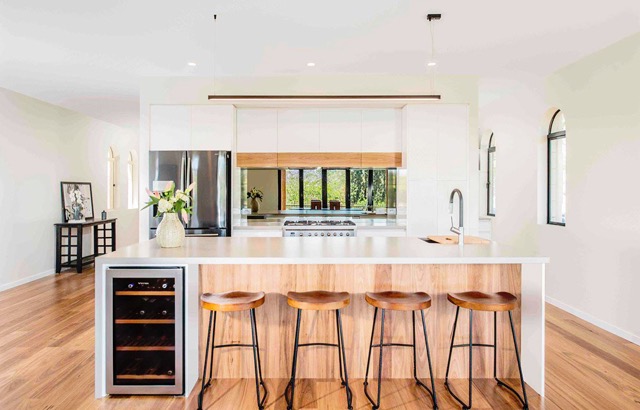A rangehood extractor is an essential part of any kitchen. But have you ever considered a downdraft extractor?
No kitchen is complete without a rangehood extractor. But much less common is the downdraft, an extraction system that expels fumes “down” through a duct, and can be installed much more discretely and with more versatility than a conventional overhead rangehood. Popular in the 1980’s and 1990’s, downdraft extractor systems are starting to make a comeback – Complete Home spoke to the team at BORA on 5 reasons why you should start thinking about them too!
1. Fresh Air
Steam and cooking fumes are often a part of the package when it comes to preparing food over a cooktop at home. And while usually these fumes are drawn away by a rangehood, any escaping fumes can linger for days as particles settle on furniture, curtains and other soft surfaces around the home.
With a downdraft extraction system, fumes and grease particles are absorbed at the source – the cooktop. This means that there are less fumes, and less odours, in your home.
2. A Clear View
Compared to an overhead rangehood, downdraft extractor systems allows for far more versatile installation, and allow complete freedom in an open-plan kitchen or when installing a cooktop on an island bench. Take advantage of the view outside your window by installing your cooktop in front – without having to worry about anything above. An open-plan kitchen design, without an overhead rangehood, can also make it easier for guests to socialise in your kitchen, and for you to interact as you cook.
3. Versatility in design
We’ve already mentioned how versatile installation of a downdraft extraction system can free up your kitchen – but just think about it! Your entire kitchen layout can change, you can install a cooktop almost anywhere, and allow for a truly open plan kitchen. Or, if you prefer, use the extra space above to install more overhead cabinetry and increase your kitchen storage space. Add sloping ceilings or full-length window facades to your design for a kitchen that’s truly different. The possibilities are virtually endless!
4. Silence
According to BORA, the average extractor hood has a sound level of over 70 decibels at head height – about the same noise level as a vacuum cleaner. This might not seem like a lot, but when added to all the other noises that fill the home, a quieter solution would always be a relief in comparison.
A downdraft extraction system, located at the kitchen plinth level, is generally quieter than a steak being grilled – even at the highest setting.
5. Easy to clean
An overhead rangehood is nearly always difficult to clean, and even then the results aren’t always clear – there may still be dirt and grease lingering inside the unit. By contrast, a downdraft extractor system can usually be taken apart, at the countertop level, without any hassle.



